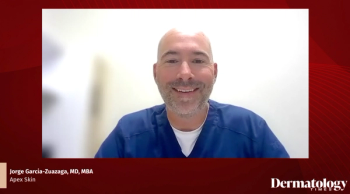
- Vol. 39 No. 05
- Volume 39
- Issue 5
Key steps to avoid a malpractice lawsuit
Aesthetic practices that provide laser and light-based therapies should be cognizant of legal issues that may affect the practice. “Legal issues arise in all facets of medicine. However, in cosmetics, the patient’s expectation of outcomes is often in conflict with that of the clinician. There is a heightened potential for patient dissatisfaction that can ultimately lead to legal action,” says Dr. Mathew Avram.
Aesthetic practices that provide laser and light-based therapies should be cognizant of legal issues that may affect the practice.
“Legal issues arise in all facets of medicine. However, in cosmetics, the patient’s expectation of outcomes is often in conflict with that of the clinician. Therefore, there is a heightened potential for patient dissatisfaction that can ultimately lead to legal action,” according to Mathew Avram, M.D., J.D., who spoke during a session at last month’s American Society for Laser Medicine and Surgery (ASLMS) annual meeting in Dallas.
The legal requirement for negligence is a breach of duty that causes harm which could constitute a malpractice action, he said. “Physicians can be held liable for the treatments or activities of their employees - even if the physician has not seen the patient himself,” said Dr. Avram, who is the president of ASLMS.
Informed consent
Any patient undergoing treatment has the right to informed consent - whether it is for a medical or cosmetic procedure. These must be signed by mentally competent adult patients 18 years old or older. The physician should explain the procedure to the patient in sufficient detail before the procedure the procedure so the patient understands the risks, benefits, alternatives, downtime and potential side effects associated with the treatment.
While written consent should be obtained prior to procedures, they do not necessarily protect the physician from a malpractice action. It only protects against an action for lack of informed consent, he said.
Written consent forms are not designed to be stationary documents. They should be updated as more is learned about complications associated with dermatologic medical devices. “Written consent forms should reflect changes in the risks and benefits of existing treatments. As new treatments are developed these forms need to include the reported risks and benefits associated with that procedure,” Dr. Avram said.
Non-physician complaints
Lawsuits increasingly stem from non-physicians performing procedures. Today, injuries are most often associated with non-physicians performing laser and light-based procedures. “The least common scenario for a lawsuit arises from the physician himself providing treatment. The most common scenario is when a non-physician conducts treatment without any supervision at all. A more frequent situation is when a non-physician performs therapy under the supervision of a physician,” he said.
The degree of training the technician has for operating laser or light sources is a key factor in whether a lawsuit will ensue, Dr. Avram said. “It is very important for the practice to understand the devices and treatments being employed,” he said.
For laser and light sources, often the best strategy to avoid complications is to understand the treatment clinical endpoints. Dr. Avram suggests looking for changes on the skin that indicate a safe treatment or one that may suggest the potential for complications.
The most common lawsuit for light-based treatments is for laser hair removal, in part, because laser hair removal is the most popular laser procedure in all of medicine, he said.
Skin rejuvenation represents the second most common lawsuit. “This mostly involves intense pulse light (IPL) devices. It is important for physicians to realize that while IPL devices are extremely effective, they are appropriate in only certain skin types and in patients who do not have tans,” Dr. Avram said.
Don't invite problems
It is imperative for physicians to know who is legally authorized to operate laser and light therapies, and other medical equipment. This is mandated by state law, which differs from state to state.
- In treating broken blood vessels, two signs of an effective treatment are immediate vessel clearance and a transient black and blue appearance of vessels. “Graying immediately after treatment indicates that the device settings are too strong,” Dr. Avram says.
- For tattoos or pigmented lesions, the appropriate clinical endpoint is epidermal whitening in contrast to epidermal splatter.
- In laser hair removal, effective treatment is usually marked by perifollicular erythema.
Articles in this issue
over 7 years ago
Minimizing the risk of lidocaine toxicityover 7 years ago
Clinical variations in pyoderma gangrenosumover 7 years ago
Immune modulators offer promising outcomesover 7 years ago
Improving continence with laser treatmentsover 7 years ago
Can I be sued for off-label use within standard of care?over 7 years ago
Vertical dermatology integration without dermatologistsover 7 years ago
How to pair energy-based devices with cosmetic injectablesover 7 years ago
A single drug may control skin cancer treatment costsover 7 years ago
How deep an SCC lies within the skin correlates to lesion lengthNewsletter
Like what you’re reading? Subscribe to Dermatology Times for weekly updates on therapies, innovations, and real-world practice tips.
















